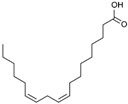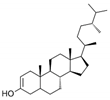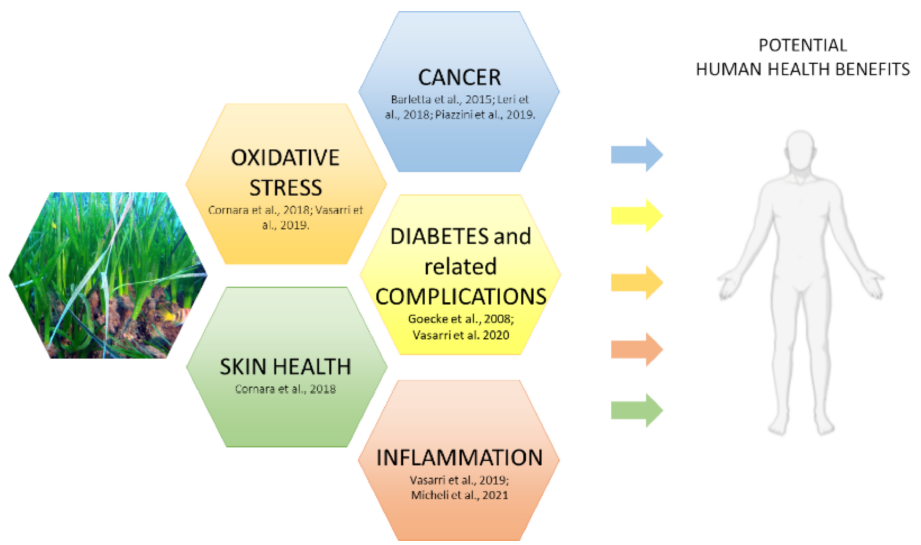Posidonia oceanica (L.) Delile is a marine plant endemic to the Mediterranean, traditionally used in some medical applications. However, the potential benefits of P. oceanica for human health have only recently been documented. New knowledge gained on the bioactive properties of P. oceanica allow the scientific community to look at this marine plant as a promising source of natural therapeutic products for human health.
Experimental investigations conducted in both in vitro cellular models and in vivo animal models pave the way for new research projects that aim to develop alternative and complementary therapeutic strategies based on P. oceanica against a wide range of pathological conditions.
- angiosperm
- marine natural products
- seagrass
- secondary metabolites
- Posidonia oceanica
- human health
1. Introduction
Seagrasses are flowering and rhizomatous plants that grow only in marine environments and form extensive underwater meadows. They are among the most valuable coastal ecosystems on the planet in terms of the goods and services they provide [1]. Although often confused with algae, seagrasses are marine vascular plants that have many primary and secondary metabolites [2].
P. oceanica is the most important seaweed species in the Mediterranean Sea, colonizing vast underwater areas, forming extensive meadows from the surface to 40 m depth, and covering about 1.5% of the total Mediterranean Sea surface [3][4][5]. For this reason, in the last twenty years, P. oceanica has become one of the main targets of the protection and management of the Mediterranean marine environment. It has been included by the European Union’s Habitat Directive (92/43/CEE) among the habitats of priority interest [6][7][8], and it is protected under the Bern and the Barcelona Conventions, and other legislation at a national level. Moreover, the MFSD (2008/56/EC) selected P. oceanica as representative species of the angiosperm quality elements for the Mediterranean marine environment [9].
In recent years, a growing body of evidence has demonstrated that P. oceanica phytocomplex possesses potential beneficial properties for human health [10][11][12][13][14][15], thus increasing the scientific community's interest in P. oceanica as an unexplored resource of phytotherapeutic compounds.
2. Phytochemical Compounds of P. oceanica Leaves
Numerous characterization studies have shown that P. oceanica is a rich source of secondary metabolites (Table 1), mainly represented by phenolic compounds [16].
| Compound | Molecular Formula | Structure | References |
|---|---|---|---|
| Chicoric Acid | C22H18O12 |  |
[10][17][18][19] |
| Caftaric Acid | C13H12O9 |  |
[10][14][16][17][19] |
| Gentisic Acid | C7H6O4 |  |
[10][14][16][17][19] |
| Chlorogenic Acid | C16H18O9 |  |
[10][14][16][17][19] |
| Caffeic Acid | C9H8O4 |  |
[10][14][16][17][19] |
| Ferulic Acid | C10H10O4 |  |
[10][14][16][17][19] |
| Cinnamic Acid | C9H8O2 |  |
[10][14][16][17][19] |
| Gallic Acid | C7H6O5 |  |
[10][14][16][17][19] |
| p-Coumaric Acid | C9H8O3 |  |
[10][14][16][17][19] |
| Quercitin | C15H10O7 |  |
[20][21] |
| Myricetin | C15H10O8 |  |
[20][21] |
| Kaempferol | C15H10O6 |  |
[20][21] |
| Isorhamnetin | C16H12O7 |  |
[20][21] |
| Phloroglucinol | C6H6O3 |  |
[16][17][20][21] |
| Pyrocatechol | C6H6O2 |  |
[16][17][20][21] |
| Pyrogallol | C6H3(OH)3 |  |
[16][17][20][21] |
| Vanillin | C8H8O3 |  |
[16][17][20][21] |
| 4-Hydroxybenzaldehyde | C7H6O2 |  |
[16][17][20][21] |
| 3,4-Dihydroxybenzaldehyde | C7H6O3 |  |
[16][17][20][21] |
| Benzoic acid | C6H5COOH |  |
[16][17][20][21] |
| 4-Hydroxybenzoic acid | C7H6O3 |  |
[16][17][20][21] |
| p-Anisic acid | C8H8O3 |  |
[16][17][20][21] |
| Vanillic acid | C8H8O4 |  |
[16][17][20][21] |
| Syringic acid | C9H10O5 |  |
[16][17][20][21] |
| Phloretin | C15H14O5 |  |
[16][17][20][21] |
| Phlorizin | C21H24O10 |  |
[16][17][20][21] |
| Palmitic acid | C16H32O2 |  |
[22] |
| Palmitoleic acid | C16H30O2 |  |
[22] |
| Oleic acid | C18H34O2 |  |
[22] |
| Linoleic acid | C18H32O2 |  |
[22] |
| Campesterol | C28H48O |  |
[22] |
| Stigmasterol | C29H48O |  |
[22] |
| β-Sitosterol | C29H50O |  |
[22] |
| Posidozinol | C16H32 |  |
[22] |
P. oceanica phytocomplex has been shown to exert biological properties attributable to the synergistic action of its secondary metabolites. Latest developments in the field of herbal medicine on the health-promoting properties and benefits that P. oceanica could provide are listed and summarized below.
3. Insights into the Bioactivities of P. oceanica with Potential Human Health Applications
In scientific research, many natural products have found applications in a wide range of fields, including biomedicine. The exploration of new natural marine products with these functional properties is a topic of great current interest for human well-being as the main focus.
The latest biomedical research shows that P. oceanica possesses many potential beneficial properties for human health. Specifically, P. oceanica leaves extract has been shown to have effects on human dermal fibroblast proliferation and collagen production, as well as anti-melanogenic properties and lipolytic properties, attributable to its antioxidant properties [10].
Oxidative stress results from an imbalance between the production of reactive oxygen species (ROS) and their elimination, and often leads to the onset and/or progression of chronic inflammatory diseases [23]. In this context, P. oceanica leaves extract has been shown to be effective against oxidative stress and the inflammatory process [12]. Furthermore, an in vivo study in mice revealed anti-inflammatory and analgesic properties of P. oceanica extract [24].
Other in vitro bioactivity studies have described the ability of a P. oceanica leaves extract to inhibit the migration and invasiveness of cancer cells [13][14] through the autophagy activation [11][14].
Besides, a recent report has shown that P. oceanica extract is suitable for use in nanotechnology. It was found that the development of an appropriate P. oceanica delivery nanosystem offers an approach to improve the bioavailability and/or optimize the solubility and stability of the phytocomplex [13].
Traditionally, the decoction of P. oceanica leaves has been used as a natural remedy for diabetes and hypertension, a role later confirmed by an in vivo animal study [25]. In addition to its anti-diabetic properties, P. oceanica extract was found to inhibit the formation of advanced glycation end products (AGEs) in vitro [15].
In conclusion, P. oceanica is a marine plant rich in secondary metabolites that has recently shown some important properties applicable to human health. Overall, P. oceanica showed antioxidant, anti-inflammatory, antidiabetic, anti-glycation properties and the ability to suppress cancer cell migration as well as activate autophagy (Figure 1).
Figure 1. Schematic representation of the potential benefits of P. oceanica phytocomplex in human health.

A future challenge should include the study of the bioavailability of the secondary metabolites of P. oceanica, and thus the actual beneficial effects on human health to propose this marine plant for potential pharmacological applications.
This entry is adapted from the peer-reviewed paper 10.3390/md19090476
References
- den Hartog, C.; Kuo, J.J.. Taxonomy and biogeography in seagrasses; Larkum, A.W.D., Orth, R.J., Duarte, C.M., Eds., Eds.; Springer: Dordrecht, The Netherlands, 2006; pp. 1–23.
- Jutta Papenbrock; Highlights in Seagrasses’ Phylogeny, Physiology, and Metabolism: What Makes Them Special?. ISRN Botany 2012, 2012, 1-15, 10.5402/2012/103892.
- Gobert, S.; Cambridge, M.T.; Velimirov, B.; Pergent, G.; Lepoint, G.; Bouquegneau, J.M.; Walker, D.I.. Biology of Posidonia; Larkum, A.W.D., Orth, R.J., Duarte, C.M., Eds., Eds.; Springer: Dordrecht, The Netherlands, 2006; pp. 387–408.
- Matteo Vacchi; Giovanni De Falco; Simone Simeone; Monica Montefalcone; Carla Morri; Marco Ferrari; Carlo Nike Bianchi; Biogeomorphology of the MediterraneanPosidonia oceanicaseagrass meadows. Earth Surface Processes and Landforms 2016, 42, 42-54, 10.1002/esp.3932.
- V. Pasqualini; C. Pergent-Martini; P. Clabaut; G. Pergent; Mapping ofPosidonia oceanicausing Aerial Photographs and Side Scan Sonar: Application off the Island of Corsica (France). Estuarine, Coastal and Shelf Science 1998, 47, 359-367, 10.1006/ecss.1998.0361.
- Boudouresque, C.F.; Bernard, G.; Bonhomme, P.; Charbonnel, E.; Diviacco, G.; Meinesz, A.; Pergent, G.; Pergent-Martini, C.; Ruitton, S.; Tunesi, L. Protection and Conservation of Posidonia Oceanica Meadows; RAMOGE and RAC/SPA Publishers: Tunis, Tunisia, 2012; pp. 1–202.
- Boudouresque, Charles François; Marine biodiversity in the Mediterranean: Status of species, populations and communities. Trav. Sci. Parc Natl. Port-Cros 2004, 20, 97-146, .
- Pergent, G. La protection légale de la Posidonie en France: Un outil efficace. Nécessité de son extension a d’autres pays Méditerranéens. In Les Espèces Marines a Protéger en Méditerranée: Rencontres scientifiques de la Cote Bleue; Boudouresque, C.F., Avon, M., Gravez, V., Eds.; GIS Posidonie: Marseille, France, 1991; pp. 29–34.
- European Commission. Directive 2008/56/EC of the European Parliament and of the Council of 17 June 2008 establishing a framework for community actions in the field of marine environmental policy (marine strategy framework directive). O. J. Eur. Communities 2008, 164, 19–40
- Laura Cornara; Giulia Pastorino; Barbara Borghesi; Annalisa Salis; Marco Clericuzio; Carla Marchetti; Gianluca Damonte; Bruno Burlando; Posidonia oceanica (L.) Delile Ethanolic Extract Modulates Cell Activities with Skin Health Applications. Marine Drugs 2018, 16, 21, 10.3390/md16010021.
- Manuela Leri; Matteo Ramazzotti; Marzia Vasarri; Sara Peri; Emanuela Barletta; Carlo Pretti; Donatella Degl’Innocenti; Bioactive Compounds from Posidonia oceanica (L.) Delile Impair Malignant Cell Migration through Autophagy Modulation. Marine Drugs 2018, 16, 137, 10.3390/md16040137.
- Marzia Vasarri; Manuela Leri; Emanuela Barletta; Matteo Ramazzotti; Riccardo Marzocchini; Donatella Degl'Innocenti; Anti-inflammatory properties of the marine plant Posidonia oceanica (L.) Delile. Journal of Ethnopharmacology 2019, 247, 112252, 10.1016/j.jep.2019.112252.
- Vieri Piazzini; Marzia Vasarri; Donatella Degl’Innocenti; Asia Guastini; Emanuela Barletta; Maria Cristina Salvatici; Maria Camilla Bergonzi; Comparison of Chitosan Nanoparticles and Soluplus Micelles to Optimize the Bioactivity of Posidonia oceanica Extract on Human Neuroblastoma Cell Migration. Pharmaceutics 2019, 11, 655, 10.3390/pharmaceutics11120655.
- Emanuela Barletta; Matteo Ramazzotti; Florinda Fratianni; Daniela Pessani; Donatella Degl'Innocenti; Hydrophilic extract fromPosidonia oceanicainhibits activity and expression of gelatinases and prevents HT1080 human fibrosarcoma cell line invasion. Cell Adhesion & Migration 2015, 9, 422-431, 10.1080/19336918.2015.1008330.
- Marzia Vasarri; Emanuela Barletta; Matteo Ramazzotti; Donatella Degl’Innocenti; In vitro anti-glycation activity of the marine plant Posidonia oceanica (L.) Delile. Journal of Ethnopharmacology 2020, 259, 112960, 10.1016/j.jep.2020.112960.
- Sylvia Agostini; Jean-Marie Desjobert; Gérard Pergent; Distribution of phenolic compounds in the seagrass Posidonia oceanica. Phytochemistry 1998, 48, 611-617, 10.1016/s0031-9422(97)01118-7.
- Mehmet Zeki Haznedaroglu; Ulvi Zeybek; HPLC Determination of Chicoric Acid in Leaves ofPosidonia oceanica.. Pharmaceutical Biology 2007, 45, 745-748, 10.1080/13880200701585717.
- L. Cariello; Laura Zanetti; Distribution of Chicoric Acid during Leaf Development of Posidonia oceanica. Botanica Marina 1979, 22, 359-360, 10.1515/botm.1979.22.6.359.
- Micheline Grignon-Dubois; Bernadette Rezzonico; Phenolic fingerprint of the seagrass Posidonia oceanica from four locations in the Mediterranean Sea: first evidence for the large predominance of chicoric acid. Botanica Marina 2015, 58, 379-391, 10.1515/bot-2014-0098.
- Magali Cannac; Lila Ferrat; Christine Pergent-Martini; Gerard Pergent; Vanina Pasqualini; Effects of fish farming on flavonoids in Posidonia oceanica. Science of The Total Environment 2006, 370, 91-98, 10.1016/j.scitotenv.2006.07.016.
- Angelina Heglmeier; Christian Zidorn; Secondary metabolites of Posidonia oceanica (Posidoniaceae). Biochemical Systematics and Ecology 2010, 38, 964-970, 10.1016/j.bse.2010.07.001.
- A.-C. Viso; D. Pesando; P. Bernard; J.-C. Marty; Lipid components of the mediterranean seagrass Posidonia Oceanica. Phytochemistry 1993, 34, 381-387, 10.1016/0031-9422(93)80012-h.
- Steven J. Forrester; Daniel S. Kikuchi; Marina S. Hernandes; Qian Xu; Kathy K. Griendling; Reactive Oxygen Species in Metabolic and Inflammatory Signaling. Circulation Research 2018, 122, 877-902, 10.1161/circresaha.117.311401.
- Laura Micheli; Marzia Vasarri; Emanuela Barletta; Elena Lucarini; Carla Ghelardini; Donatella Degl’Innocenti; Lorenzo Di Cesare Mannelli; Efficacy of Posidonia oceanica Extract against Inflammatory Pain: In Vivo Studies in Mice. Marine Drugs 2021, 19, 48, 10.3390/md19020048.
- Goksel Gokce; Mehmet Zeki Haznedaroglu; Evaluation of antidiabetic, antioxidant and vasoprotective effects of Posidonia oceanica extract. Journal of Ethnopharmacology 2008, 115, 122-130, 10.1016/j.jep.2007.09.016.
